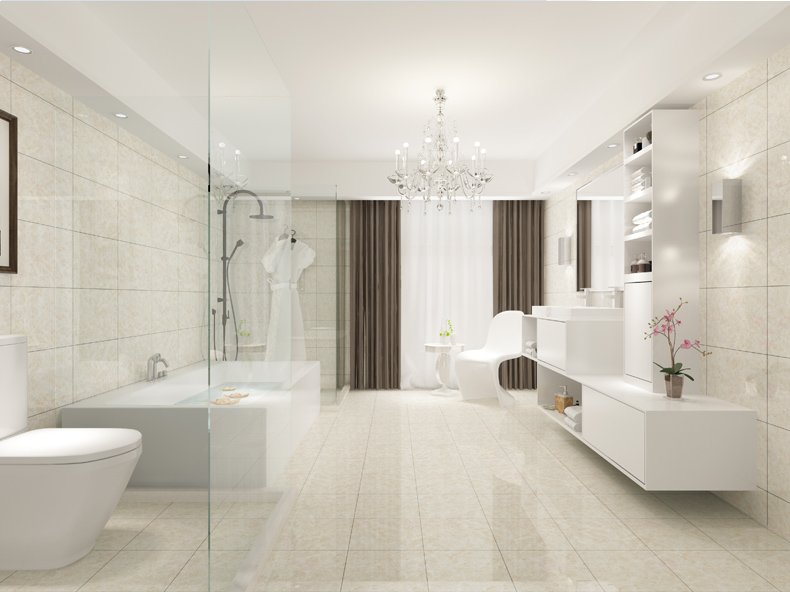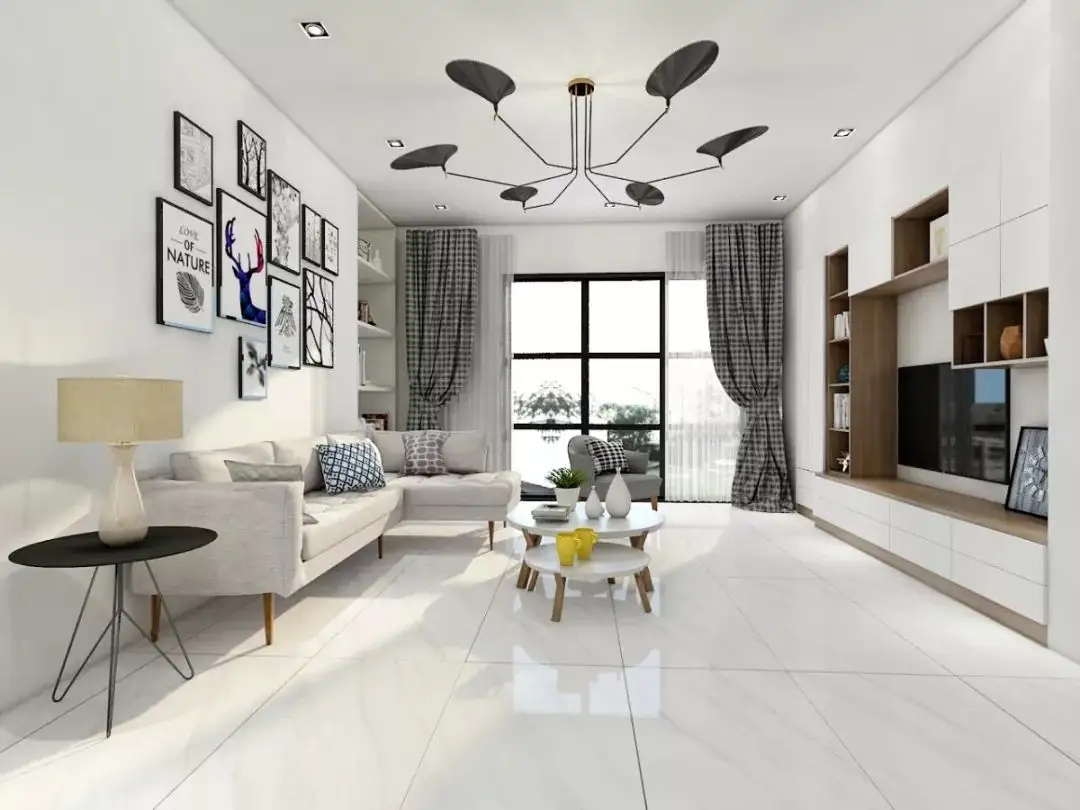When it comes to choosing ceramic tiles for your space, size and shape play a crucial role in achieving the desired look and functionality. This article aims to guide readers in making informed decisions by considering various factors.
Firstly, assessing the dimensions of the space is essential to determine the appropriate tile size that will complement the room.
Secondly, the style and design goals of the space should be considered, as different tile sizes and shapes can create distinct aesthetics.
Additionally, the functionality of the room should not be overlooked, as smaller tiles may be more suitable for high-traffic areas.
Furthermore, evaluating the visual impact of different tile sizes and exploring the versatility of various shapes can aid in selecting the perfect tile.
Lastly, understanding the importance of grout lines and seeking professional advice and inspiration are crucial steps in the decision-making process.
By following these guidelines, readers will be equipped to choose the right size and shape of ceramic tiles for their space.
An essential step in selecting ceramic tiles for your space is carefully assessing its dimensions to ensure an optimal fit and cohesive aesthetic.
Before making any decisions, it is crucial to measure the length and width of the area where the tiles will be installed. This will help determine the number of tiles needed and allow for accurate calculations of the space.
Additionally, it is important to consider the height of the room and any potential obstacles, such as doorways or windows, that may affect the installation process.
Taking precise measurements will prevent any unnecessary complications or delays during the tile installation.
By thoroughly assessing the dimensions of your space, you can choose the right size and shape of ceramic tiles that will enhance the overall look and functionality of your room.

Determining the style and design goals for a given area can evoke a sense of excitement and anticipation, as it allows one to envision the visual transformation that can be achieved through the selection of appropriate ceramic tiles.
The style and design goals should be carefully considered to ensure that the chosen tiles complement the overall aesthetic of the space. Factors such as the architectural style, color scheme, and desired atmosphere should be taken into account.
For a more contemporary and minimalist look, large format tiles with clean lines and neutral colors may be preferred. On the other hand, a more traditional or rustic design may call for smaller tiles with intricate patterns and earthy tones.
It is important to strike a balance between personal preferences and practical considerations to achieve a cohesive and visually pleasing result.
Considering the intended purpose of the room is crucial when selecting the appropriate style and design to ensure that the ceramic tiles not only enhance the visual aesthetics but also enhance the functionality and practicality of the space.
Different rooms have different functional requirements, and the choice of ceramic tiles should align with these needs. For example, in a bathroom or kitchen where water spillage is common, it is important to select tiles that are water-resistant and easy to clean.
In high-traffic areas such as hallways or entryways, tiles that are durable and resistant to wear and tear would be more suitable.
Additionally, the size and shape of the tiles can also impact the functionality of the room. Larger tiles can create a sense of spaciousness, while smaller tiles can add texture and visual interest.
Ultimately, considering the functionality of the room will ensure that the chosen ceramic tiles not only look good but also serve their purpose effectively.

Evaluating the visual impact of various tile sizes involves examining how different dimensions and arrangements can influence the overall look and feel of a room. The size of ceramic tiles can greatly affect the perception of space and the visual flow within a room.
Here are four key considerations when evaluating the visual impact of different tile sizes:
- Proportion: Larger tiles can create a sense of openness and expansiveness, while smaller tiles can make a space feel more intimate and cozy.
- Pattern: Different tile sizes can be arranged in various patterns, such as herringbone or basketweave, which can add visual interest and texture to a room.
- Grout lines: Tile size can affect the width of grout lines, which can impact the overall aesthetic. Smaller tiles with narrower grout lines can create a more seamless and unified look.
- Style: The size of tiles should align with the overall style and design of the space. Larger tiles may be more suitable for contemporary or minimalist designs, while smaller tiles can complement traditional or vintage aesthetics.
Considering these factors will help in choosing the right size and shape of ceramic tiles to achieve the desired visual impact in any space.

Exploring the versatility of various tile shapes unveils a world of design possibilities that can elicit a sense of excitement and inspiration in any interior space. Unlike traditional square or rectangular tiles, alternative shapes such as hexagons, triangles, and diamonds offer unique visual appeal and can create dynamic patterns when combined.
Hexagonal tiles, for instance, can be arranged in a honeycomb pattern to add a touch of modernity and visual interest to a bathroom or kitchen backsplash.
Triangular tiles, on the other hand, can be used to create geometric patterns that add a contemporary touch to a living room or hallway floor.
Diamond-shaped tiles lend themselves well to creating visually stunning diagonal patterns, adding a sense of movement and depth to any space.
The possibilities for creativity and customization are endless when it comes to using different tile shapes in interior design.
Grout lines play a crucial role in not only providing structural support but also enhancing the overall aesthetic appeal of tiled surfaces in interior design. These lines, which are the spaces between the tiles filled with grout, serve multiple purposes that contribute to the functionality and visual impact of the tiled space.
1. Alignment: Grout lines help align and maintain the placement of the tiles, ensuring a level and even surface. They prevent shifting or movement of the tiles over time, maintaining the integrity of the installation.
2. Durability: By filling the gaps between tiles, grout lines provide additional strength and support to the tiled surface. They help distribute the weight and impact evenly, reducing the risk of cracking or damage.
3. Visual Impact: Grout lines can significantly impact the overall appearance of a tiled space. The color and width of the grout lines can create different visual effects, such as highlighting the individual tiles or creating a seamless and uniform look. Careful selection of grout color can also complement or contrast with the tiles, enhancing the design scheme of the space.
Grout lines are not just functional elements but also important design choices that should be considered when selecting ceramic tiles for interior design projects.

When seeking guidance from professionals and seeking inspiration, it is essential to consider expert advice and explore different design possibilities to make informed decisions for your interior design project.
Professionals in the field of ceramic tile installation can provide valuable insights regarding the right size and shape of tiles that would best suit your space. They can assess the dimensions of the area and suggest appropriate tile sizes to ensure a visually pleasing layout. Additionally, professionals can advise on the suitability of different tile shapes based on the style and function of the space. Seeking their expertise can help avoid costly mistakes and ensure a cohesive design.
Furthermore, exploring different design possibilities can provide inspiration and help you envision how various tile sizes and shapes can transform your space. By considering professional advice and exploring design options, you can make confident decisions that will enhance the aesthetic appeal of your interior design project.
In conclusion, when selecting ceramic tiles for a space, it is crucial to consider the dimensions of the area, the desired style and design goals, and the functionality of the room.
Additionally, evaluating the visual impact of different tile sizes and exploring the versatility of various tile shapes can greatly enhance the overall aesthetic appeal.
Moreover, understanding the importance of grout lines and seeking professional advice and inspiration can help ensure the right size and shape of ceramic tiles are chosen for the space.
If you need to know more information,just feel free to contact with us.